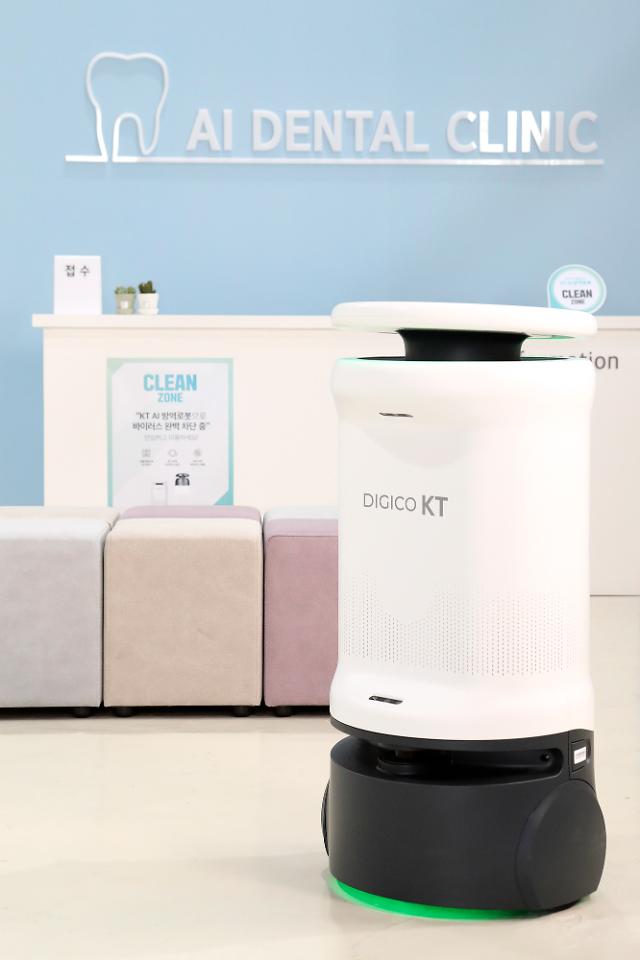
[Courtesy of KT]
The global outbreak of a novel coronavirus prompted researchers to quickly develop autonomous quarantine robots that can roam about high-risk facilities. There are many kinds of autonomous quarantine robots in operation but they can only clean vacant spaces or places with a very small moving population.
KT said that its AI robots sterilize more than 99.9 percent of viruses. Ultraviolet-C (UV-C) light-emitting diodes (LEDs) mounted at the bottom kill germs and viruses on the floor. Robots can autonomously drive and automatically charge through camera and light detection and ranging (LiDAR) sensors which measure distance by illuminating the target with laser light.
AI quarantine robots can be used in the form of comprehensive services that include installation, platform use, remote control, and store network construction, KT said, adding it would provide services such as remote monitoring through 24-hour intelligent control. Customers can control the robot with a smartphone app and check status information, quarantine scheduling, and result reports.
It is optimized for daily quarantine through functions such as implementing quarantine in a set area, regular quarantine services according to a pre-booked schedule, and standstill quarantine for air cleaning and quarantine. "What is important is not just the device itself, but a service platform that provides a comprehensive customer experience," KT's AI robot team head Lee Sang-ho said in a statement on March 30.
KT has steadily expanded its AI platform to service robots, care robots, barista robots, and quarantine robots. The company is trying to expand its service platform to new areas such as delivery, logistics and the environment.




